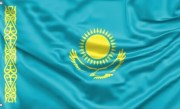China Interested In Kazakhstan and Uzbekistan Mineral Deposits
Central Asia is one of the priority regional directions of China’s foreign policy, with developing land transport links making the region an important mineral resource base. China’s active policy has positive aspects, but also contains potential threats for the Central Asian republics. While in Kyrgyzstan and Tajikistan, China has managed to form a deep dependence on investment, in Uzbekistan and Kazakhstan, the PRC is trying to maintain a stable level of its presence.
Chinese Mining Interests in Kazakhstan

Kazakhstan is a strategically important supplier of uranium. The country’s share of China’s uranium supply is about 65% of China’s total, while Kazakhstan’s domestic production covers only 20% of China’s energy needs. CGN Mining controls 49% stakes in uranium JVs with Kazatomprom, Semizbai-U and Ortalyk.
In accordance with the requirements adopted by Kazakhstan in relation to foreign developers, China must provide investment or technology in exchange for the operation of mines. Kazakhstan received the fuel pellet production technology, and the two parties began the construction of a plant for the production of fuel assemblies.
Compared to the policy towards other republics, China uses new forms of ensuring its presence in Kazakhstan. China Nonferrous Metal Industry’s Foreign Engineering and Construction and ERG intend to build an electrolysis and aluminium smelter in Kazakhstan. The parties signed agreements on the supply of non-ferrous metals and ferroalloys to China.
China’s infrastructure investment in Kazakhstan is the largest in Central Asia.
Chinese Mining Interests in Uzbekistan

Uzbekistan is the most dynamic country in Central Asia in terms of population growth and the development of various sectors of the economy. Since the collapse of the USSR, the country has been developed a strong regional leadership. This desire is limited by energy dependence and the lack of direct access to the sea. The combination of these factors explains many features of China’s policy in the development of ore minerals in Uzbekistan. In particular, emphasis is placed on transport projects in the development of infrastructure and participation in uranium mining in the context of Uzbekistan’s plans for the development of nuclear energy.
Compared to the deeply dependent policy towards Tajikistan and Kyrgyzstan, in Uzbekistan China wants to control the level of its investment presence. This applies to areas that affect China’s immediate interests.
The Uzbek Almalyk Mining and Metallurgical Combine (AMMC) has patents for the production of platinum, rhenium, palladium, silver, gold and is the largest copper producer in Central Asia. In 2021, it showed the second highest yield in the country, worth 5.36 trillion Soum (about US$560 million). In 2022, China’s B Grimm, which specializes in engineering technologies and equipment for the mining and metallurgical industries, and AMMS) signed a memorandum of cooperation.
Another Uzbek example is Navoi Mining and Metallurgical Combine (NMMC), which exports 99% of its uranium production. In 2022, against the backdrop of a significant rise in value, the company is conducting an IPO. China General Nuclear Power Corporation (CGNPC) has been purchasing uranium from NMMC since 2008, and is currently looking to secure a stake in this venture. The Chinese bank ICBC Standard, as part of a consortium of JPMorgan Chase, Citi, Société Générale, Credit Suisse, Deutsche Bank, provided NMMC with a loan for the implementation of its investment program to the tune of about US$1.2 billion. The Chinese side has a pre-emptive right to purchase mined uranium at world prices.
Source: AsiaIs
Related Reading





